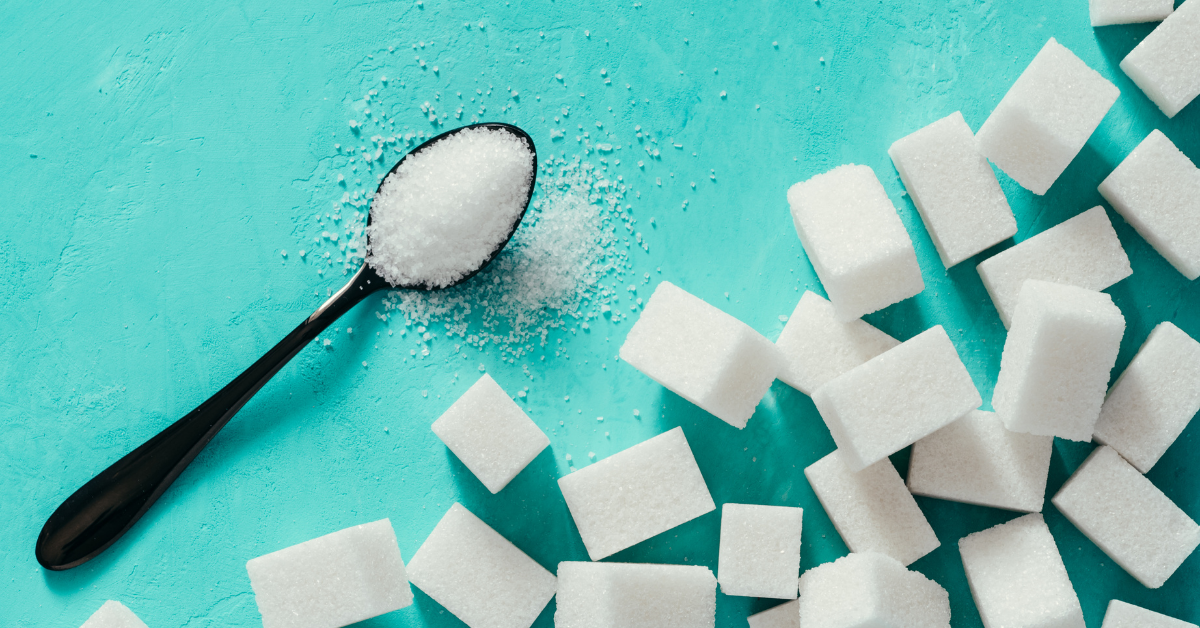
FAQ: Can people with diabetes eat sugar? Learn about sugar, its nutritional facts, alternatives, and how to think about sugar if you have diabetes.
Diabetes Problem Foods, Pt. 9
Sugar is a carbohydrate that can come from many sources. It is purified for cooking and general use from sugarcane and sugar beets. It is also commonly found in natural foods such as fruits, vegetables, dairy, and milk in different forms. Processed forms of sugar are often found in baked goods, soft drinks, and other foods. However, the type and amount of sugar in a food item is not always evident. Sugar comes in many forms and may be labeled as barley malt and beet sugar, and others. Therefore, many people, including people diagnosed with diabetes, are not aware of their overall sugar consumption.
Given the global problem, many organizations encourage people to limit their consumption of sugar. For example, the American Heart Association recommends men consume no more than nine teaspoons of sugar a day and women six teaspoons of sugar a day. Excessive amounts of processed sugar consumption have been linked to cardiovascular disease, diabetes, and obesity. The imbalance of sugar is a risk factor for diabetes-related complications.
Many people have either ditched using sugar altogether, consume alternative sweeteners, and often avoid and overindulge in their favorite recipes. Yet, with any food, the key to balanced nutrition and blood sugars is choosing the right amount, at the right time, in the right way for your body.
History of Sugar
Some research supports that sugar cane consumption goes as far back as 8000 BCE by the New Guinea people and possibly during prehistoric times. Domestic sugar cultivation grew and spread across the world for the next several thousand years. In 1747 a German chemist discovered sugar in beets, and people began using them as well for a source of domestic sugar. Today, sugar cane and sugar beet yields are still growing thanks to ever-improving modern agricultural technology.
Here are some interesting facts about sugar:
Sugar Nutritional Facts
I believe it is important to make the most of the foods that you eat. Once you have the products you would like to try, compare them to see which ones give you the best benefit for your health. I have selected some common sweeteners, including applesauce, which shows up in many baked good ingredients. The below information is based on one teaspoon serving size.
|
|
Sugar (Sucrose) | Stevia | Swerve (Erythritol) | Apple Sauce |
|---|---|---|---|---|
| Made/Processed | Made from sugarcane or sugar beets | Natural sweetener extracted from leaves | A naturally-occurring sugar alcohol found in fruits and roots | Peeled and ground apples, unsweetened |
| Calories | 16 | 0 | 0 | 2 |
| Fats | 0g | 0g | 0g | 0g |
| Carbohydrates | 4.2g | 0g | 4g* | 1g |
| Protein | 0g | 0g | 0g | 0g |
| Sweetness | 1 (table sugar is used as the baseline for sweetness comparisons) | 350 x sweeter than table sugar | 60%-70% the sweetness of table sugar | Usually used 1:1 as sugar replacement, but sweetness depends on the type of apple |
| Potassium | 0mg | 0mg | 0mg | 4mg |
| Sodium | 0mg | 0mg | 0mg | 0mg |
| Other information |
|
Because of the nature of its origins, stevia is often thought to be the safest alternative in the "artificial sweetener" category, used widely in coffee, tea, baking, etc. | *Because erythritol is quickly absorbed and discarded by the body, the carbohydrates have no effect. Therefore, erythritol is considered to have zero net carbs. Erythritol does not raise blood sugar levels. |
1%-Vitamins A, B6, C, Calcium, Iron, Magnesium, Phosphorus, Zinc, and others. Applesauce also has some fiber, unlike other listed sweeteners. |
Frequently Asked Questions about Sugar from People with Diabetes
Working closely with people with diabetes, especially newly diagnosed, here are some of the most common questions I hear.
How to I know if sugar is the primary ingredient in a product?
The first three ingredients are the primary ingredients in the product. Check the label to see if sugar, in any form (sugar, high fructose corn syrup, fructose, etc.), is one of them.
What are some ways I can limit my sugar consumption?
Check the serving size on your label. Sometimes people think that a whole package is a serving and fail to notice the serving size on the label. Or, when they see the serving size has three grams of sugar, they assume that they will only consume three grams of sugar if they eat the entire package. Be mindful of serving size and how to interpret the information so you can accurately calculate your consumption.
Keep whole fruits to small sizes and eat the skin, if you can. Fruits are good for you; however, moderation still applies to them. Most of the fiber of an apple is in the skin. As you know, fiber helps to slow the breakdown of sugar in your body.
When cooking at home, consider swapping sugar for alternatives. That way, you can still enjoy foods you love without the same blood sugar spikes. Find great recipes here.
Looking for how to swap sweeteners in your recipes? Take a look at these:
Stevia Conversion Chart
| Sugar amount | Equivalent Stevia powdered extract | Equivalent Stevia liquid concentrate |
|---|---|---|
| 1 cup | 1 teaspoon | 1 teaspoon |
| 1 tablespoon | 1/4 teaspoon | 6 to 9 drops |
| 1 teaspoon | A pinch to 1/16 teaspoon | 2 to 4 drops |
From The Stevia Cookbook, copyright 1999 Ray Sahelian and Donna Gates
Interested in trying Swerve sweetener? Here's a conversion chart for that.
Is it better to buy sugar-free food versus something that has sugar in it?
Sugar, fat, and salt are often added to foods to increase satiety and tastefulness. Sometimes sugar alcohols such as sorbitol, xylitol, erythritol are added (as you can see, sugar alcohols typically end in “ol”). Sugar alcohols are not completely digested and can cause upset stomach, excess gas, and other stomach issues, especially if you consume too much.
Remember that sugar-free doesn't always mean carb-free. Look at nutrition labels and pay attention to total carbohydrates if you are counting carbs and using diabetes medications like insulin.
I am not sure about sugar alternatives. How do I find out more, and if there are new warnings?
You can sign up for MedWatch, emailed information regarding potential food issues. You can also learn more about FDA-approved sweeteners.
Read this personal review of artificial sweeteners from someone with diabetes.
What are some ways I can sweeten some of my recipes or curve my desire for sweets?
You can add honey, coconut sugar, applesauce, and certain sweet vegetables to your recipes. Consider preparing fruits and vegetables such as carrots and sweet potatoes for those last-minute cravings. These foods all come with better nutritional profiles than just sugar, but be mindful of carbohydrates in all of these foods.
Remember that stress plays a critical role in blood sugar management. The more you know about foods and how they affect your body, the better choices you can make. Diabetes nor prediabetes have to imprison you. Do your best to live guilt-free.

